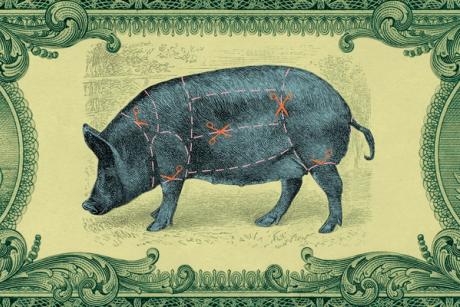
The splitting and tokenization of art is all the rage. While the idea of unlocking the value of a work of art by selling shares of it has been around for over a decade, a host of new initiatives are taking it to an explosive new level.
Among the most splashy new launches is Artex Fellowship of Liechtenstein, co-founded by financiers Prince Wenceslas von Liechtenstein and Yassir Benjelloun-Touimi, the latter apparently the driving force. The project buys art (its first acquisition is the work of Francis Bacon Three studies for a portrait of George Dyer, 1963) bought for $52 million in 2017 at Christie’s and today valued at $55 million. Investors can buy shares for as little as $100 in Bacon which can be traded (or technically, the company that owns them) on the Liechtenstein MTF (an alternative trading platform). Other paintings will follow; trading begins July 21.
This is largely a “real world” initiative, but many others are leveraging blockchain in their start-ups. They can’t wait to get their hands on just $3.3 trillion, which is apparently the value of all the art in the world, in museums and private hands. They want to democratize access to this art and allow investors to share the profits when it is resold. One such platform, for example, is Mentus, in the UK, which targets qualified investors who invest at least $3,000. In the USA, masterpieces goes to retail investors at a lower level; however, it has recently had negative effects press, especially on potential returns. The June launch is also Weng Art Investa platform for exchanging art editions in the form of tokens.
Among the most colorful new entrants is The rat, in Ras Al-Khaimah, one of the smaller emirates of the United Arab Emirates. Its holding company will propel, and I quote, “Rare Age Technologies to new heights in digital experiences using tokens like the Rare Antiquities Token and FND Token.” No sneering, please.
Then there are platforms that are less focused on investing and more on the role of collectors, for example, Particle, launched by Loïc Gouzer, former rainmaker at Christie’s, which encourages investors to buy stocks and love art. A little unconvincing interview of its CEO explains everything to you. And another start-up, Artrium will encourage collectors to buy shares in works of art in museums, with no gain other than the pleasure of participating.
I questioned Pierre Valentin, leading lawyer in the art world, about all this. He has just joined the American law firm Boies Schiller Flexner with five colleagues. Valentin will work from London and Milan, as will his colleagues, extending Boies’ commitment to Europe.
I first asked Valentin if he had heard of any fractional investment litigation. “No so far,” he replied, “But this is new, uncharted territory, and there’s a lot of potential for things to go wrong.” It selects the aspects that the potential investor should think carefully about: who does the due diligence and provenance research, how the insurance works, how is the work managed, stored and who makes the decision to resell. “If you only have 10% of the work, who makes that decision? he asks, concluding: “From a lawyer’s point of view, consider this opportunity carefully, and I would like to know that the team behind the offer has the right background and experience.
